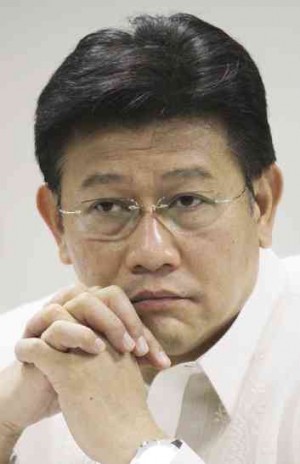Following the discovery that fireworks that welcomed the New Year worsened air pollution nearly 10 times the healthy level in Metro Manila, environment officials are now thinking of imposing penalties on cities unable to regulate its use.
Environment Secretary Ramon Paje said his agency is studying options on how to minimize air pollution during the New Year celebrations, including slapping sanctions on cities and towns with the highest level of pollutants.
“For example, we may impose a fine of P1 million for a certain percent rise of PM10, or particulate matter 10 microns and below in diameter, which is used to measure air quality,” he said.
The Department of Environment and Natural Resources (DENR) said it recorded unnaturally high readings of PM 10 in Metro Manila on Jan. 1 at the height of the revelry.
The average reading was 1,437 ug/Ncm (micrograms per normal cubic meter of air), compared to 537 ug/Ncm in 2013, “way beyond” the average healthy value of 150 ug/Ncm set by the government and the World Health Organization.
Paje said some cities, including Marikina and Muntinlupa, have already passed ordinances regulating the sale and manufacture of firecrackers.
“But it’s not enough to regulate firecrackers in only one or two cities, because air pollution covers not just one or two cities but the entire Metro Manila,” he said.
Paje, however, said the agency was still studying the legal basis for the sanctions, including the Clean Air Act. He added that the Pollution Adjudication Board would be in charge of the cases.
The DENR regularly monitors the air quality in Metro Manila and pays particular attention to pollution levels during the New Year celebrations.
Fire crackers and fireworks are big business in the Philippines as many people believe making noise to greet the arrival of the New Year attracts good fortune.
